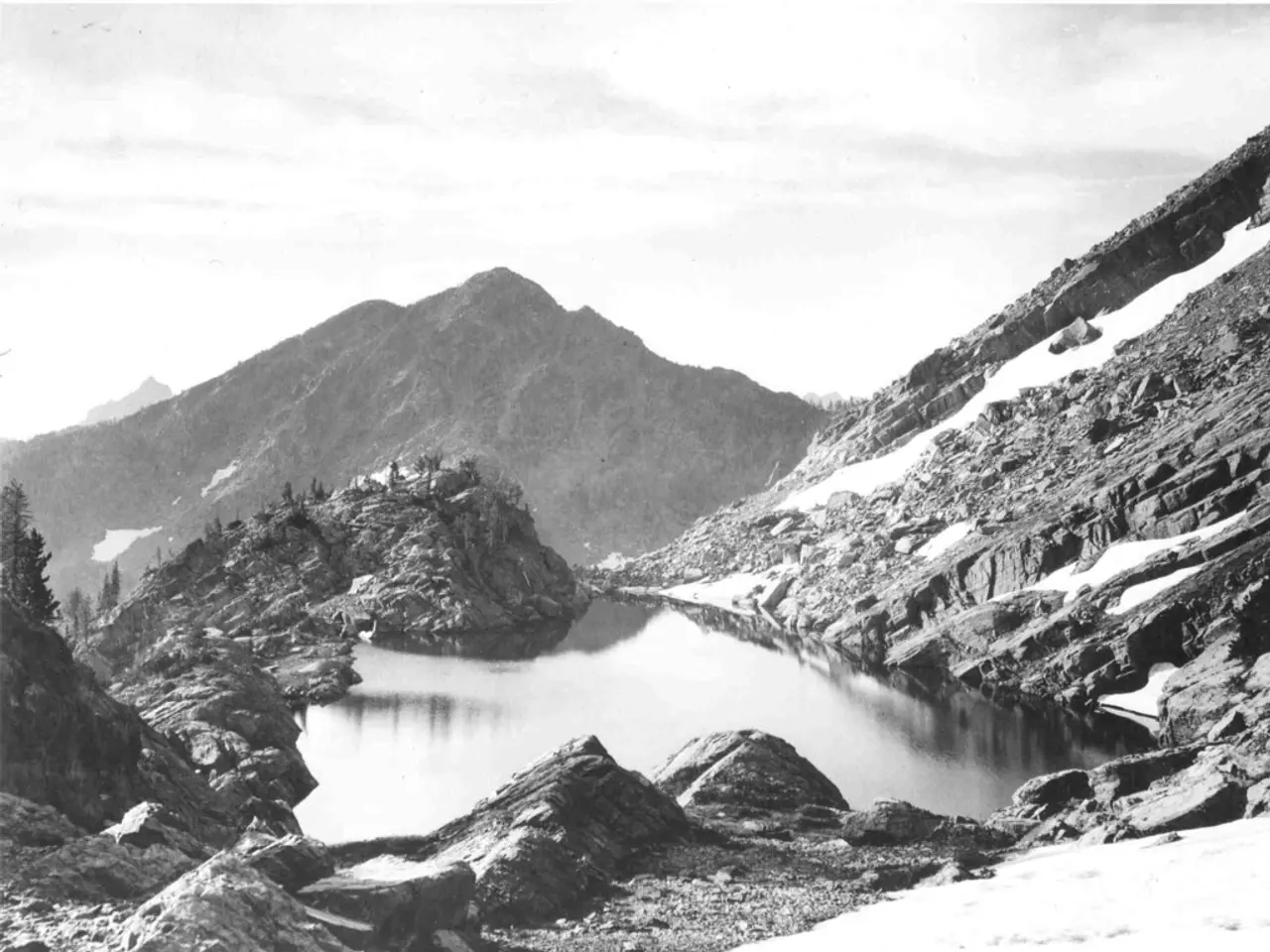Trail Guide for South Kaibab Path
The South Kaibab Trail, a part of the Grand Canyon hike, offers breathtaking views from start to finish. Located in the heart of the canyon, Ooh Ahh Point, one of the trail's destinations, dates back an impressive 1.84 billion years.
The trail, described as "a trail in a hurry to get to the river," stretches 1.8 miles to Ooh Ahh Point, with a climbing elevation of 600 feet. The journey takes approximately 1 hour, but the return climb, which is much more challenging, often takes twice as long.
For a summer day hike, the National Park Service recommends Skeleton Point as the farthest turnaround for most day hikers. The total distance to Skeleton Point is 6 miles, with a climbing elevation of 2040 feet, and it takes approximately 3-4 hours. Cedar Ridge, another recommended destination, is located 3 miles into the trail, with a climbing elevation of 1180 feet, and it takes approximately 2-3 hours to reach.
Recommended precautions for hiking the South Kaibab Trail focus heavily on water, gear, and weather due to the trail’s exposed, strenuous, and often extreme environment.
Water: There is no water available anywhere along the South Kaibab Trail except at the trailhead and the Colorado River at the bottom. Hikers must carry all the water they will need for the hike, which can be several liters per person in summer heat. It’s advised to bring more than enough water to stay fully hydrated amid desert conditions.
Gear: Due to the lack of shade, pack and wear sun protective gear such as hats, sunglasses, and high-SPF sunscreen to protect against intense sun. In winter or cold months, be prepared for ice and snow near the rim; microspikes or traction devices may be necessary for safety on slippery sections. Hiking poles can help with stability on steep descents and especially the difficult climb back up. Remaining conservative near cliff edges is important because the trail is right along steep drop-offs, and accidents have occurred when hikers got too close for photos. Be ready to step aside safely for mule traffic that uses the trail.
Weather: The trail is entirely exposed, and temperatures can be extreme, often exceeding 100°F (38°C) in summer and sometimes surpassing 120°F (49°C) during heat waves. Carry out plans to start early to avoid the hottest parts of the day and monitor weather conditions closely. Storms can cause deadly flash floods even if the storm is distant. Winter hiking requires caution due to lingering cold, snow, ice, and possibly wind.
Additional tips: The hike down is much easier than the hike up. Keep aware of surroundings and trail etiquette where passing, especially since the trail can be narrow but mostly wide enough (approx. 4 feet).
In sum, carrying ample water, sun protection, proper footwear, traction gear if winter hiking, and closely monitoring weather conditions are key safety measures on the South Kaibab Trail. Preparing for the physical challenge of a very steep return hike is also essential for a safe and enjoyable experience.
The South Kaibab Trail was built by engineers in 1924-25 and is part of the Arizona Trail (AZT), which stretches about 800 miles from Mexico to Utah. Camping is not allowed along the South Kaibab Trail, including at Cedar Ridge. The South Kaibab Trailhead is located at Grand Canyon Village, AZ 86023. The trail is closed to vehicles at the trailhead, and the road to the trailhead (Yaki Point Road) is also closed.
[1] National Park Service - South Kaibab Trail [2] Grand Canyon Hiking - South Kaibab Trail [3] AllTrails - South Kaibab Trail
- The South Kaibab Trail, originally built by engineers in the 1920s and part of the Arizona Trail, offers breathtaking views and a challenging hike, with trails extending up to Skeleton Point for a 6-mile journey.
- For safe hiking, carrying ample water, sun protection, proper footwear, traction gear if winter hiking, and closely monitoring weather conditions are essential, as the trail is entirely exposed and temperatures can be extremely high, even surpassing 120°F (49°C) during heat waves.
- Other recommendations include wearing sun protective gear, such as hats, sunglasses, and high-SPF sunscreen, and using hiking poles for stability on steep descents and the difficult climb back up.
- Camping is not allowed along the South Kaibab Trail, including at Cedar Ridge, which is 3 miles into the trail with a climbing elevation of 1180 feet.
- To access the South Kaibab Trailhead, you can travel to Grand Canyon Village, AZ 86023, where the trailhead is located. However, the trail and the road to the trailhead (Yaki Point Road) are closed to vehicles, making it essential to plan transportation accordingly.





